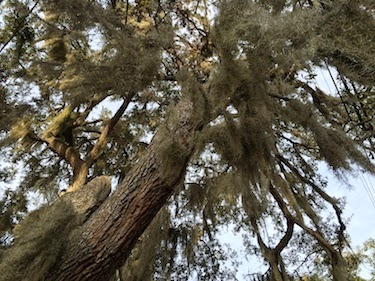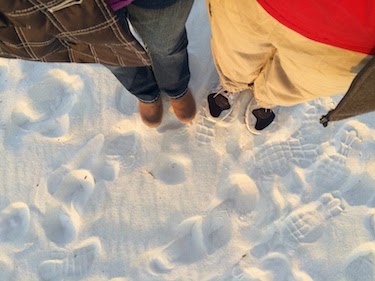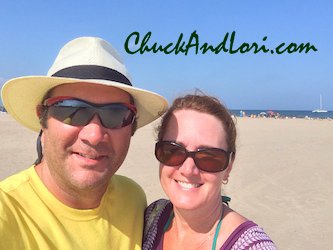 |
| The Pier At Panama City Beach, Florida |
Most Americans and Canadians knows this, but for the benefit of our overseas readers, it might be worth mentioning that there’s a Panama City in Florida, not just in the Latin American country of Panama. Even though the Latin American capital is about 20 times more populous, when you tell a North American you’re going to Panama City, they’re way more likely to assume you’re headed to this beach town on Florida’s panhandle.
In Saturday’s blog we used Panama City as the eastern border in our definition of the northern Gulf of Mexico’s beach destinations. We had the luck to be able to spend a week here on our way down to the central Florida vacation lands, and although it’s a good five hours from the Mississippi Gulf Coast (where we’re from originally) it still sort of felt like visiting home. We think it had a lot to do with the beach, the moss-covered oak trees, and the seafood.
 |
| Moss-Covered Oaks in Panama City, Florida |
Those mossy oaks deserve a special mention. Oaks are indigenous to the beach destinations of the Northern Gulf of Mexico, not the southern pines you see there so prevalently today and that you see so thickly growing just a few miles inland. Oaks are slow-growing hardwoods, and pines (the weeds of Southeastern trees) grow rapidly. Oak wood is prized for its durability and hardness; pine is valued for it’s rapid growth and its resulting cheapness. Oaks thrive along the northern Gulf Coast because they’re salt-hardy. In fact, when hurricanes sweep through with their tidal surges, the salt water kills the pines and leaves the oak trees.
Men have prized the durability of oaks for hundreds, perhaps thousands, of years. In Gulf Breeze, Florida, very close to Alabama’s Redneck Riviera, you can find the Naval Live Oaks Reserve, part of the National Park Service’s Gulf Islands National Seashore. Back when the United States of America was only a few years old, warships like the USS Constitution were built with oak. Being such a slow-growing wood, the federal government recognized it could take a century or more to grow and harvest enough wood to build a navy, so they planted a forest of live oaks. In the meantime, oak warships were replaced with steel ones, but the trees our founding fathers intended to become warships are still growing. It’s bizarre to see these beautiful, majestic mature oak trees neatly planted in rows like just another fruit orchard, and it’s especially bizarre to think that our government used to actually plan more than a century in advance.
The moss that decorates all these oaks, by the way, isn’t a lichen as you may have thought: it’s a leafless, flowerless, and seedless simple plant. Because of its biology, it absorbs water from the air, which means it needs a humid environment to live, which also explains why it thrives in this very humid geography. Moss has been used for centuries for bedding, insulation, kindling, and anywhere packing or filling material might be used.
 |
| Fried Shrimp and Oyster Basket: Not Good For Your Heart or Waistline, But Oh, So Good For Your Soul! |
If you come to Panama City or Panama City Beach, you’re mostly likely coming for the beaches and for the seafood. You won’t be disappointed in either regard. Captain Anderson’s is a well-known mainstay, but it was still closed for the season when we visited. But based on this trip and our last visit a couple of years ago, we can recommend Pineapple Willy’s and Schooner’s in Panama City Beach and Uncle Ernie’s and Bayou Joe’s in Panama City (try Bayou Joe’s for great breakfast options like their “bayou omelet” with shrimp, fish, and a heavenly cream cheese sauce). If you like seafood, but you’re lost looking over the menu at a seafood restaurant, stay tuned for an upcoming blog on Gulf Seafood 101.
So far as beach-going, we think the best spots are the mile east and the mile west of Panama City Beach’s giant pier or Saint Andrew’s State Park. If you’re looking for activities that don’t track sand in your car, check TripAdvisor: there’s a marine park, an alligator park, water parks, miniature golf, the Miracle Strip Amusement Park (in season), and even a Ripley’s Believe It or Not in PCB. In Panama City, check out the Bear Creek Feline Center, the Museum of Man In The Sea, and don’t forget to stroll around downtown. If you’re into beach art, particularly pastel watercolors, be sure to stop in Paul Brent’s gallery.
 |
| Panama City Beach Faces Southwest, Offering Great Sunsets |
 |
| Next Week The White Stuff Under Our Feet Will Be Snow, Not Sand |






